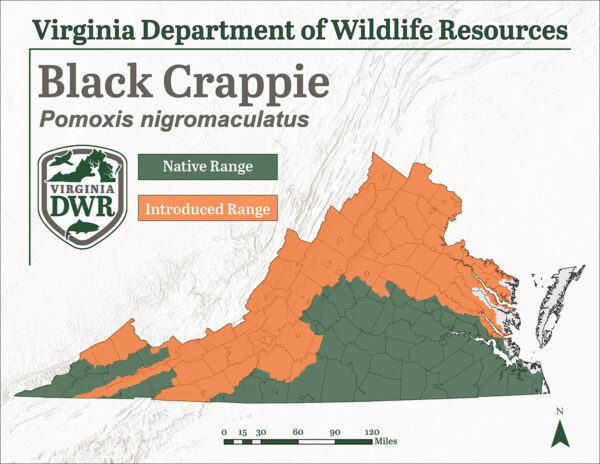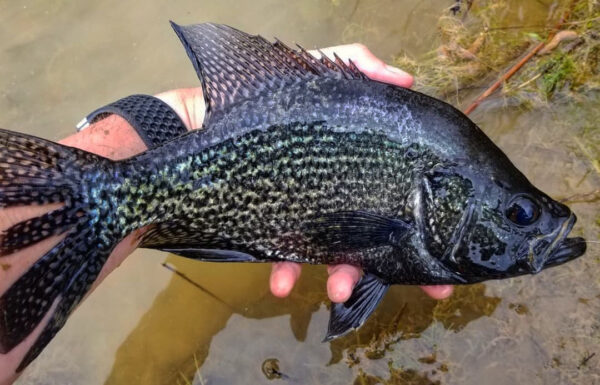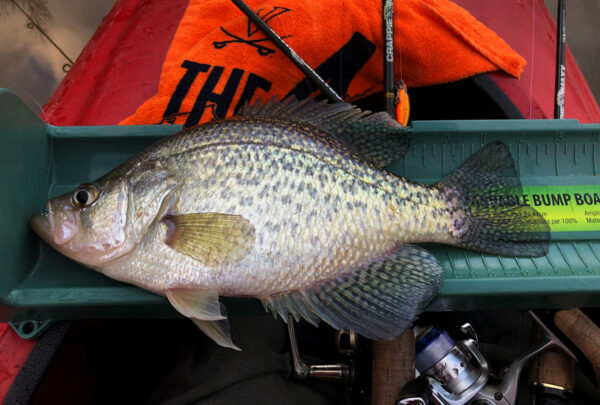A Black Crappie captured during a DWR fish community survey. ©Photo by Scott Herrmann - DWR
A Black Crappie captured during a DWR fish community survey. ©Photo by Scott Herrmann - DWR
Fact File
Scientific Name: Pomoxis nigromaculatus
Classification: Fish, Order Perciformes, Family Centrarchidae
Size: Black Crappie can exceed 16 inches in length and 3 pounds in weight
Life Span: Black Crappie typically live to about 7 years in Virginia, however, some stunted populations can live for 15 years or more
Identifying Characteristics
- Round bodied fish with an upturned mouth
- 7 or 8 dorsal spines (White Crappie have 5 or 6)
- Protruding lower jaw
- Dark to olive color along the back, transitioning to silver on the stomach
- Black mottling throughout
- Sexually dimorphic; males can be nearly solid black during spawning
Habitat
Black Crappie most often prefer cooler, deeper, clear bodies of water with little current. Black Crappie orient to submerged structure, particularly during their spawning process.
Distribution:
Black Crappie are native throughout much of southeast Virginia, and the Upper Tennessee watershed in southwest Virginia. As a species prized for recreation and consumption, Black Crappie have also been introduced throughout much of the Commonwealth.

Diet
Black Crappie feed heavily upon insects and other species of fish.
Reproduction
Black Crappie spawn in the spring and early summer, often in colonies with multiple nests present in one area. Nests are nearly always located near submerged structures, such as stumps, vegetation, or brush. Black Crappie can also find great spawning substrates in and around boat docks when natural protective habitats aren’t readily available. Because Black Crappie eggs are adhesive, they remain attached to structures or substrates while being protected by the male.

A post-spawn male Black Crappie.
Last updated: July 18, 2024
The Virginia Department of Wildlife Resources Species Profile Database serves as a repository of information for Virginia’s fish and wildlife species. The database is managed and curated by the Wildlife Information and Environmental Services (WIES) program. Species profile data, distribution information, and photography is generated by the Virginia Department of Wildlife Resources, State and Federal agencies, Collection Permittees, and other trusted partners. This product is not suitable for legal, engineering, or surveying use. The Virginia Department of Wildlife Resources does not accept responsibility for any missing data, inaccuracies, or other errors which may exist. In accordance with the terms of service for this product, you agree to this disclaimer.


